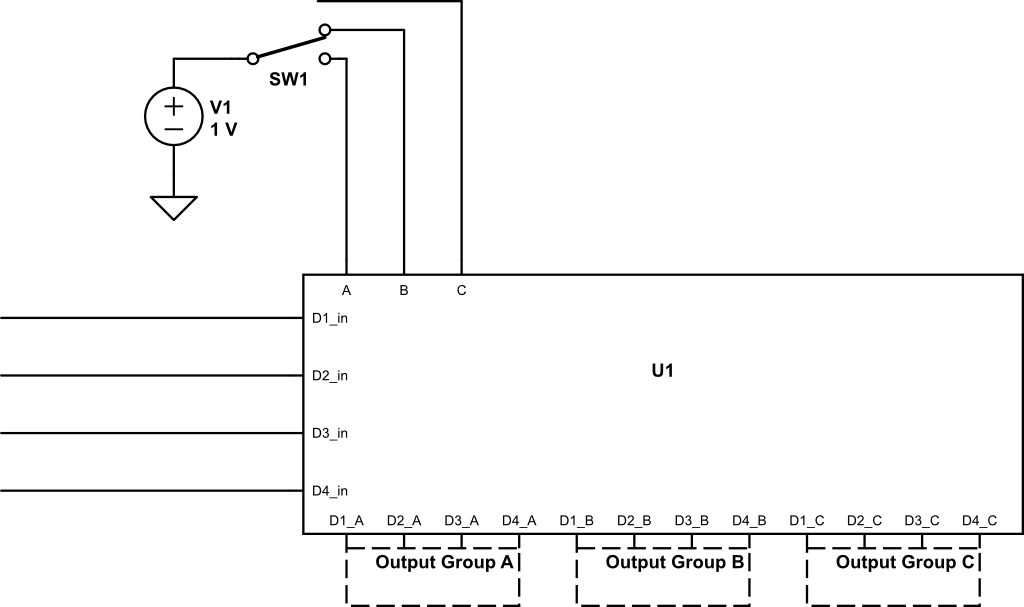Okay so the foundation for my curiosity is that in dealing with Arduinos, I found they can be used to program the similar but smaller ATtiny chips. This is the main hookup configuration that some of you may be familiar with if you've done this before.

My problem then is I want to create a shield that sits atop the arduino and has multiple sockets for ATtinys, and a selector switch that allows for choosing which ATtiny is being programmed to.
I actually did make a prototype, and here's what it looks like.

Not the easiest thing to solder!

So it just has a power switch and a simple single pole triple throw. Now I figured the best way to do it was to connect all of them to ground, and let the SPTT choose between which was powered. And in order to make the board as simple as possible, I connected the 4 data lines (3 green and 1 yellow in the picture) straight down and all 3 ATtiny's are connected in parallel to the data, regardless of if they are powered.
Of course this board fails though because I incorrectly assumed there would be no leakage through the ATtiny's data lines, and there is, so the other 2 that aren't being programmed weakly connect through the micro to their respective grounds.
Here's a schematic of it, just pretend it's a SPTT instead of SPDT.

Okay to the point. Effectively what I want is a device that performs this function. Would this be considered a mux?



